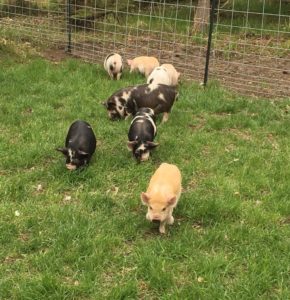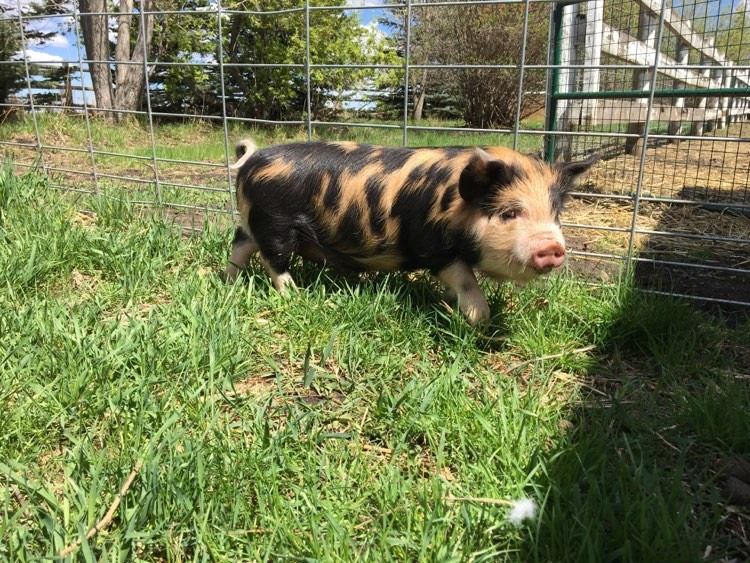Where do I start?
- Start Small. Many producers recommend starting with two to four weaner/feeder pigs (20-25 kg) in the spring and raise them until slaughter/market weight (100-130 kg). Do this for a couple of years before considering increasing the total number of weaner/feeder pigs or adding breeding animals to your farm. That way, the size of your pig herd will not outpace your experience and your capacity to care for, or market, them.

- Breed Selection. There are a number of different breeds that could be a good fit for your operation, including Kunekune, Tamworth, Berkshire, Hereford, Hampshire and White pigs (Landrace, Yorkshire). The type of pig that best fits your operation will depend on your goals. Each breed will have distinctive advantages and shortfalls depending on nutrition (pasture/grain), housing environment (outdoor/indoor), management (temperament and hardiness), and finishing time.
- Buy pigs from trusted sources. This can be from local groups, online sources, or breeders. Try and avoid auction marts, as pigs from multiple sources may be mixed there. Try to purchase from a single source, and ideally one that has been tested and is free from or vaccinated for common diseases. Purchasing cheap pigs will generally cost you more in the long run due to costs associated with disease, mortality, and slow growth.
- There are legal requirements for registering your farm with the provincial government and for reporting movements of pigs. Requirements – Small Scale Pig Farming.
- Healthy Pigs. Regardless of the number, type or breed of pig you purchase, the most important aspect is to purchase from a healthy herd. This can alleviate a lot of potential problems. Try to quarantine your pigs when they arrive on your farm is an important part in maintaining the health and safety of your pigs.
- Veterinarians should be an important part of your operation. However, in some regions it can be difficult to find one with pig experience. Try to find a veterinarian prior to purchasing pigs to ensure they can help you when required.
- Book Slaughter Space in Advance. Ensure you can market your pigs when they get to market weight. Many abattoirs require booking a spot two or more months in advance.
How many pigs should you start with?
Start small with two to four weaner pigs, typically purchased in the spring and raised until market weight (late fall). This will give you an opportunity to understand the requirements and commitment required in raising pigs. Once you have become comfortable raising weaner pigs for a couple of seasons, you can build your herd carefully and slowly. Always look for advice from experienced farmers who have been successful in raising pigs.
Where can you purchase pigs?
Pigs should be purchased from reputable suppliers. This can be from local groups, online sources, or breeders. One place to avoid is auction marts, as pigs from multiple sources may be mixed there. It is recommended to buy from a single source herd that has been tested and is free of or vaccinated for common diseases. Purchasing a cheap pig will generally cost you more in the long run due to costs associated with disease, mortality, and slow growth.
Book slaughter space in advance. Ensure you can market your pigs when they get to market weight. Many abattoirs require booking a spot two or more months in advance. Make sure to book ahead, possibly even before buying any pigs. You do not want to end up with unmarketable pigs, especially if you do not have a contingency plan to care for them.
Important purchasing questions
- Are they castrated or intact?
- What breed are they?
- Did they receive any vaccines, dewormers, or other treatments? If so, do they have any outstanding drug withdrawal periods?
- Any health concerns? (Best to consult with your veterinarian, as well as the supplier’s veterinarian if they have )
It is important to observe the conditions of the farm where you are purchasing pigs. This will give you an opportunity to see how well they were cared for and identify any future potential concerns.
